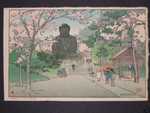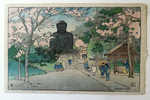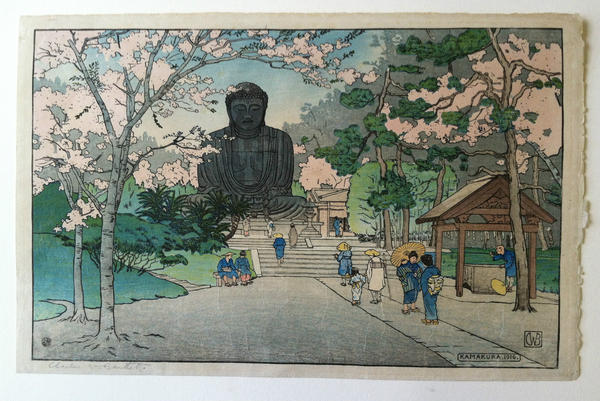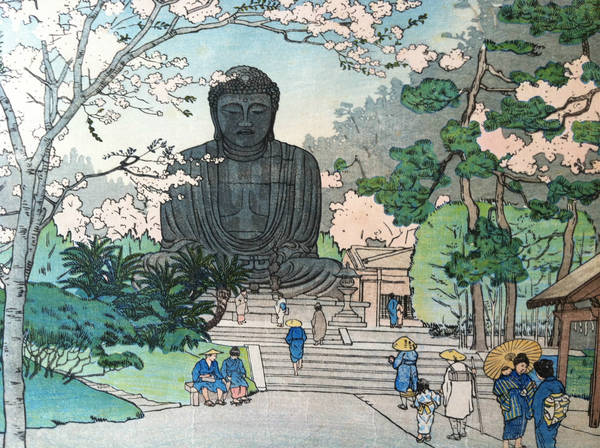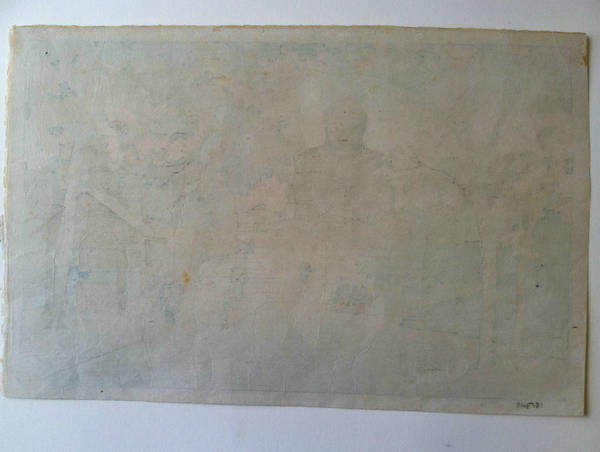| Notes (this edition)?: |
| The following information was taken from the original web listing of this artwork. Note that there may be some inaccuracies:
Depicts the statute of the Great Buddha located in Kamakura, Japan.
Published by Watanabe Shozaburo in 1916, as one of Bartlett's nine Japan prints in his portfolio "2nd Series".
Signed in graphite, lower left margin, with "CWB" and "Kamakura 1916" inscribed in rectangles in lower right corner of print. Watanabe's seal in lower left corner of print.
Pinks are strong, which is significant since reds tend to fade first. Print, margins, and back of print are clean. Graphite inventory notation on back, lower right corner.
Print and paper are in very good condition, considering it was printed at least 98 years ago. Upon very careful examination, there are some “crinkles” in pavement. Print does not show any signs of repairs. |
|
| Artist Bio: |
Charles William Bartlett (1860-1940) was one of the first artists to work with the publisher Watanabe Shozaburo. Bartlett studied at the Royal Academy in London and at Academie Julian in Paris. Until his travels to Japan, Ceylon, Indonesia, and China in 1913, Bartlett worked primarily as a landscape and genre painter. In 1915 he met famous print publisher Watanabe, with whom he collaborated on the publication of a number of "shin hanga" style colour woodblock prints during the next decade, using Watanabe's studio to carve and create his own woodblocks. Bartlett designed 38 woodblock prints for Watanabe, beginning in 1916 and lasting through 1925. Twenty-two of these prints were produced within the first year, many with the date 1916 carved into the key block. The first series of prints consisted of six Indian scenes plus a cover print of the Taj Mahal. This was followed by a series of six Japanese scenes. Many of Bartlett's prints and etchings were scenes from his travels through Southeast Asia, China, and later Hawaii. After 1917, Bartlett settled in Hawaii where he remained for the rest of his life.
It is little known that in actual fact Bartlett commissioned Watanabe to publish his 38 scenes, rather than being an artist working for Watanabe, and from his base in Hawaii Bartlett held a very tight reign over Watanabe's production of each scene, requesting numerous fine colour changes for each scene. Because each of the scenes were commissioned and thus paid for by Bartlett , he maintained ownership of all the woodblocks, which were shipped back to Hawaii after each edition and are still kept in Hawaii even to this day.
|
|



